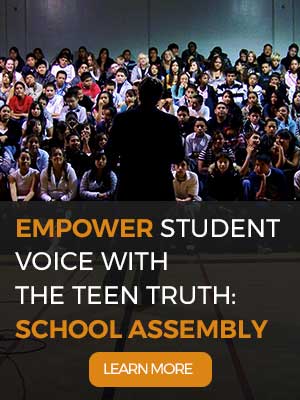How To Build Empathy In Students
Picture a crowded high school cafeteria on a Friday.
As an educator, the image probably sends a shiver of anxiety down your spine. As you monitor the cafeteria, you notice a group of girls laughing and whispering juicy gossip to each other. You spot a group of boys, getting so rowdy it walks the line between an argument and playful banter. You notice an entire table of students looking down at their phones with earbuds firmly attached, content with the comfort of sitting near other people while interacting with someone or something on the internet. All of these are normal scenarios on any campus around the world.
But another common scene is a student sitting all alone. Their eyes down, not at a book or a cell phone, but simply straight at the floor so as not to make eye contact with anyone in the room.
Compassion for those students will come naturally to those of us in education who have a heart for children and who are trained in methods of making everyone feel welcome and cared about. Our students, on the other hand, may not yet have that empathy for others ingrained in their hearts and minds. Social-emotional skills are such a critical component in regards to educating youth on our campus in preparation for becoming positive members of society.
Some argue “those skills should be taught at home” or “there aren’t enough hours in the day to provide character education” and in all fairness, that might be true. In a perfect world that would be the case, but in the “real world” of public education we are often charged with establishing a culture of empathy and compassion for others with students who have no outside model of such traits. That’s quite a challenge.
To address that issue, here are 3 ways you can begin to create a campus full of change-makers who will not only notice the student sitting alone, but will feel compelled to join that student and attempt to establish a connection.
#1 – Help Students Find Common Ground By Showing Them Their Similarities
There is an activity that I have seen a few different versions of, and every time the impact was insightful. It’s been called Walk the Line, Cross the Line, and In my Shoes to name a few. The object of the activity is to highlight the kinship we may have with each other when it comes to life experiences, good or bad. It very simply allows us to realize that we are not alone and to reflect on the idea that there may be others around us that may understand the feelings that we are having. Here’s a great version of the activity.
#2 – Ignite and Empower Your Student Leaders Through Summits
Every single campus includes students with strong leadership potential. However, they’re rarely used to their full potential. The goal is to utilize that group to provide the peer-to-peer interactions in order to expand your reach as a counselor. Your teachers can be great resources when it comes to pinpointing those in class that exhibit a natural gift to lead others. Include these students in your mission to ensure nobody feels isolated or alone. Teen Truth provides a powerful leadership summit that empowers young people to think critically about social-emotional issues, such as inclusivity. It can be used as a springboard to launch your campaign for a more positive school culture.
#3 – Get Students Invested By Starting Clubs That They Really Want
There will always be that group of students who volunteer for everything and join in willingly. Those are your jocks, student council, and theater kids, for example. As a campus you may want to evaluate what you have to offer for those students who may be on the fringe and have different interests that are outside the normal range of extra-curricular offerings. Survey your student body and get a pulse on what types of clubs and activities may spark more participation. Seek out staff members that may want to start up an interesting club or support group. Here is a great website that provides creative ideas for clubs you may never have thought about.
The heartbreaking image of a student sitting all alone in the cafeteria or walking with their head down through a crowded hall has played out generation after generation. The role that social media plays in this continuous scene of isolation adds yet another level of difficulty to an age-old issue on all campuses. As counselors we must be diligent in our pursuit of finding ways to instill empathy and compassion in all members of our educational community, staff and students alike. Model the behavior you envision for the entire campus. Go out of your way to make contact with those who may have trouble reaching out on their own. A sincere smile, words of encouragement, or extending an invitation to join you may sound like small gestures, but they can prove to be life changing for an otherwise isolated child. Encourage others to start a chain reaction that can transform your campus and finally cancel that rerun of loneliness students face on a daily basis. CLICK HERE to use this free lesson on creating stronger connections.

Penny Knight
School Counselor, TEEN TRUTH





